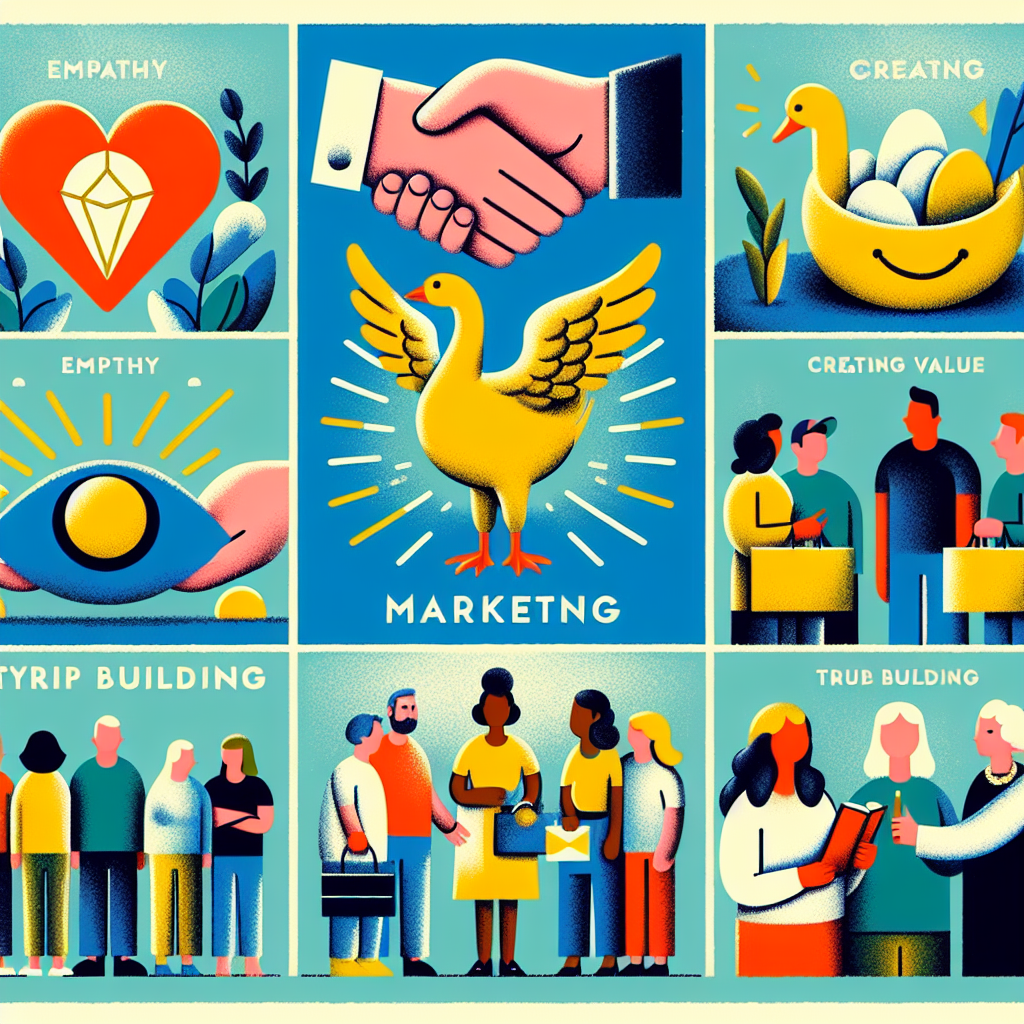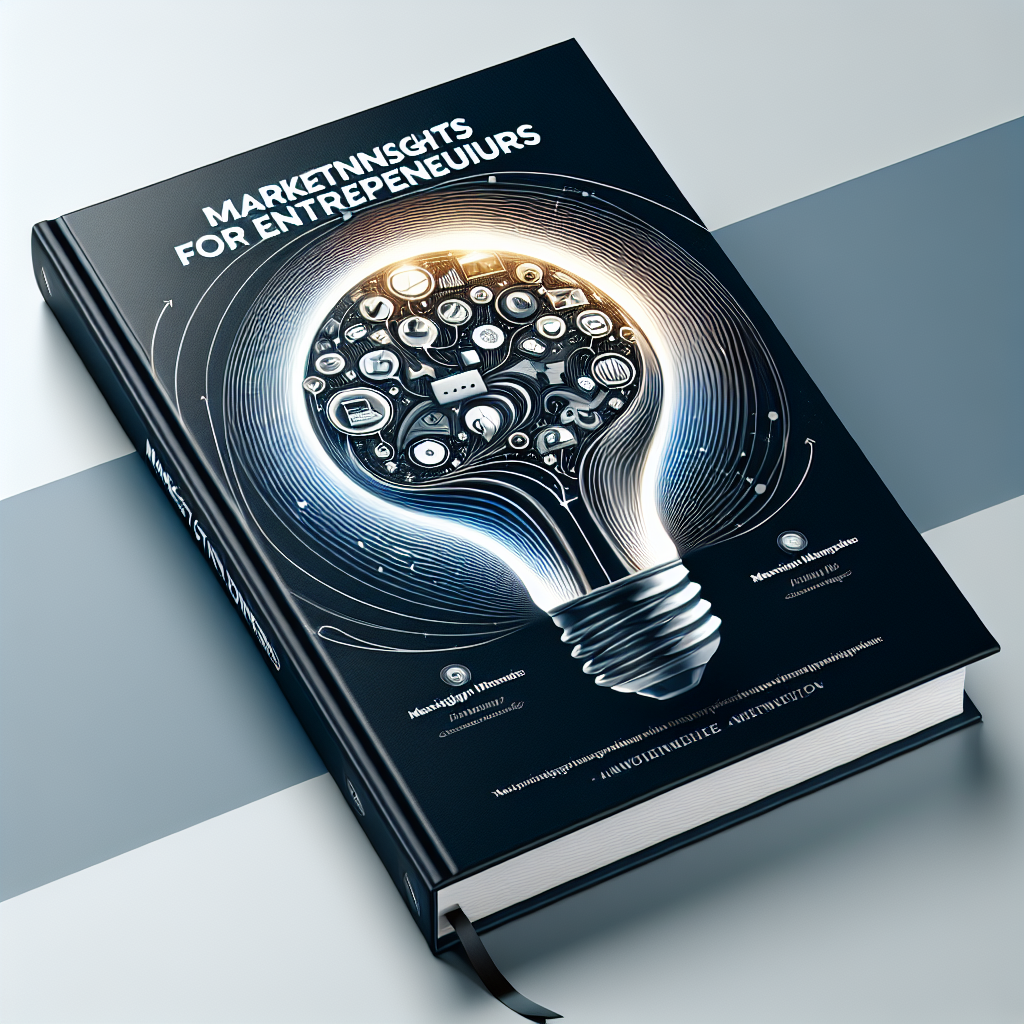Seth Godin’s Purple Cow: How to Stand Out in a Crowded Market
The Importance Of Being Remarkable: Lessons From Purple Cow
In today’s saturated market, standing out is more challenging than ever. Seth Godin’s ”Purple Cow” offers a compelling solution to this dilemma: be remarkable. The concept is simple yet profound. Imagine driving through the countryside, seeing field after field of cows. After a while, they all blend together, becoming part of the background. But if you were to spot a purple cow, it would immediately capture your attention. This is the essence of Godin’s message: to succeed, you must be the purple cow in your industry.
Being remarkable means more than just being different; it means being worth making a remark about. In a world where consumers are bombarded with choices, only the truly exceptional stand out. Godin argues that traditional marketing methods are no longer effective. The days of interrupting potential customers with ads are over. Instead, businesses need to create products and services that are inherently remarkable, so much so that people can’t help but talk about them.
One of the key lessons from ”Purple Cow” is the importance of innovation. Innovation doesn’t necessarily mean inventing something entirely new; it can also mean improving an existing product in a way that makes it extraordinary. For instance, consider how Apple revolutionized the smartphone market. They didn’t invent the mobile phone, but they reimagined it in a way that made it remarkable. The iPhone’s sleek design, intuitive interface, and groundbreaking features set it apart from anything else on the market at the time.
Another crucial takeaway is the value of targeting a niche market. Trying to appeal to everyone often results in appealing to no one. Instead, focus on a specific segment of the market and aim to be the best in that niche. This approach not only makes it easier to stand out but also fosters a loyal customer base. For example, consider the success of companies like Tesla. By focusing on the niche market of electric vehicles, Tesla has built a devoted following and established itself as a leader in the industry.
Moreover, Godin emphasizes the power of storytelling. A remarkable product or service often comes with a compelling story that resonates with people. This story can be about the origins of the company, the unique process behind the product, or the impact it has on the world. A well-crafted story not only makes the product more memorable but also creates an emotional connection with the audience. Patagonia, for instance, is not just known for its high-quality outdoor gear but also for its commitment to environmental sustainability. This story has helped Patagonia build a strong, loyal customer base.
In addition to innovation, niche targeting, and storytelling, Godin also highlights the importance of taking risks. Being remarkable often means stepping out of your comfort zone and trying something new. This can be daunting, but the potential rewards are worth it. Companies that play it safe rarely achieve remarkable status. On the other hand, those that dare to be different often find themselves at the forefront of their industries.
In conclusion, Seth Godin’s ”Purple Cow” teaches us that in order to stand out in a crowded market, businesses must strive to be remarkable. This involves embracing innovation, targeting niche markets, crafting compelling stories, and taking risks. By doing so, companies can capture the attention of consumers and build a loyal customer base. In a world where mediocrity is the norm, being a purple cow is the key to success.
How To Identify And Target Your Niche Market
In today’s saturated marketplace, standing out can feel like an insurmountable challenge. Seth Godin’s ”Purple Cow” offers a compelling solution: be remarkable. But how do you become remarkable? One of the most effective strategies is to identify and target your niche market. By focusing on a specific segment, you can tailor your offerings to meet their unique needs, thereby distinguishing yourself from the competition.
To begin with, understanding your niche market requires thorough research. Start by analyzing your current customer base. Who are they? What are their interests, behaviors, and pain points? This information can often be gleaned from customer surveys, social media interactions, and sales data. Additionally, look at your competitors. Who are they targeting, and how are they positioning themselves? This can provide valuable insights into gaps in the market that you can exploit.
Once you have a clear picture of your potential niche, the next step is to define it more precisely. This involves segmenting the market based on various criteria such as demographics, psychographics, and geographic location. For instance, if you are in the fitness industry, you might identify a niche market of busy professionals who are looking for quick, effective workout solutions. By narrowing your focus, you can develop a more targeted marketing strategy that speaks directly to this group.
After identifying your niche, it’s crucial to understand their specific needs and preferences. This is where customer personas come into play. Create detailed profiles of your ideal customers, including their goals, challenges, and buying behaviors. These personas will serve as a guide for all your marketing efforts, ensuring that your messaging resonates with your target audience.
With a clear understanding of your niche market, you can now tailor your products or services to meet their unique needs. This might involve tweaking existing offerings or developing new ones altogether. For example, if your niche market values sustainability, you could introduce eco-friendly products or adopt greener business practices. By aligning your offerings with the values and preferences of your niche, you can create a strong emotional connection that fosters loyalty and advocacy.
Marketing to a niche market also requires a focused approach. Traditional mass marketing techniques are often too broad to be effective. Instead, consider using targeted digital marketing strategies such as social media advertising, email marketing, and content marketing. These channels allow you to reach your niche audience more directly and engage with them on a deeper level. For instance, you could create a blog that addresses the specific challenges faced by your niche market, offering valuable insights and solutions.
Moreover, building a community around your brand can be incredibly powerful. Encourage your niche audience to connect with each other and with you through online forums, social media groups, or local events. This not only fosters a sense of belonging but also turns your customers into brand advocates who can help spread the word about your remarkable offerings.
In conclusion, identifying and targeting your niche market is a strategic way to stand out in a crowded marketplace. By understanding the unique needs and preferences of a specific segment, you can tailor your products, services, and marketing efforts to create a compelling value proposition. As Seth Godin’s ”Purple Cow” teaches us, being remarkable is about more than just being different; it’s about being relevant and valuable to a specific group of people. By focusing on your niche market, you can achieve this and carve out a distinctive place in the market.
Creating A Unique Selling Proposition: Insights From Seth Godin
In the bustling marketplace of today, where consumers are bombarded with countless choices, standing out can seem like an insurmountable challenge. However, marketing guru Seth Godin offers a beacon of hope with his concept of the ”Purple Cow.” This idea, which he explores in his book of the same name, revolves around the notion that to capture attention and thrive, businesses must create something remarkable—something that stands out like a purple cow in a field of ordinary cows. This leads us to the importance of crafting a unique selling proposition (USP), a critical element for any business aiming to distinguish itself from the competition.
To begin with, a unique selling proposition is essentially what makes your product or service different and more appealing than those of your competitors. It’s the reason why customers should choose you over anyone else. Seth Godin emphasizes that in a world overflowing with options, being merely good is not enough. You need to be remarkable. This means identifying what makes your offering unique and communicating that distinctiveness effectively to your target audience.
One of the first steps in creating a compelling USP is to understand your audience deeply. Godin suggests that businesses should focus on a specific niche rather than trying to appeal to everyone. By zeroing in on a particular segment of the market, you can tailor your message and product features to meet the unique needs and desires of that group. This targeted approach not only makes your marketing efforts more efficient but also helps in building a loyal customer base that feels understood and valued.
Moreover, Godin advises that businesses should not shy away from being bold and taking risks. In a crowded market, playing it safe is often the riskiest move of all. Instead, strive to be innovative and daring. Whether it’s through groundbreaking product design, exceptional customer service, or a memorable brand story, find ways to break the mold and offer something that consumers haven’t seen before. This boldness can set you apart and make your brand memorable.
Transitioning from understanding your audience to implementing your USP, it’s crucial to communicate your unique qualities clearly and consistently. Godin points out that consistency in messaging helps in building trust and recognition. Every touchpoint with your customer, from your website to your social media presence, should reflect your unique selling proposition. This cohesive approach ensures that your audience receives a unified message about what makes your brand special.
Additionally, Godin highlights the power of storytelling in making your USP resonate with consumers. People are naturally drawn to stories, and a compelling narrative can make your brand more relatable and engaging. Share the story behind your product, the problem it solves, and the passion that drives your business. This emotional connection can turn potential customers into loyal advocates.
Furthermore, it’s important to continually evaluate and refine your USP. The market is always evolving, and what sets you apart today might not be as effective tomorrow. Godin encourages businesses to stay agile and be willing to adapt. Regularly seek feedback from your customers and keep an eye on industry trends to ensure that your unique selling proposition remains relevant and compelling.
In conclusion, Seth Godin’s insights on creating a unique selling proposition underscore the importance of being remarkable in a crowded market. By understanding your audience, being bold, communicating consistently, leveraging storytelling, and staying adaptable, you can craft a USP that not only sets you apart but also drives lasting success. Embrace the challenge of standing out, and let your business be the purple cow that captures the world’s attention.
Case Studies Of Brands That Successfully Implemented Purple Cow Strategies
In the ever-evolving landscape of modern business, standing out in a crowded market is no small feat. Seth Godin’s ”Purple Cow” concept has become a beacon for brands seeking to differentiate themselves. The idea is simple yet profound: to be remarkable, you must be like a purple cow in a field of monochrome bovines. Several brands have successfully implemented Purple Cow strategies, and their stories offer valuable insights into how to capture the market’s attention.
Take, for instance, the case of Apple. When Apple launched the iPod in 2001, the market was already saturated with MP3 players. However, Apple’s approach was different. They didn’t just sell a device; they sold an experience. The sleek design, user-friendly interface, and the seamless integration with iTunes made the iPod a must-have gadget. This was a classic Purple Cow move—Apple didn’t just improve on existing products; they redefined the category. The iPod became synonymous with portable music, and Apple’s market share soared.
Similarly, consider the story of Dollar Shave Club. Before its launch, the razor market was dominated by a few big players, and the products were often expensive. Dollar Shave Club disrupted this market by offering a subscription-based model that delivered razors directly to consumers at a fraction of the cost. Their viral marketing video, which was both humorous and straightforward, captured the essence of their brand and resonated with a broad audience. This innovative approach not only garnered millions of views but also converted viewers into loyal customers, proving that a Purple Cow strategy can turn a mundane product into a market sensation.
Another compelling example is that of Tesla. In an industry dominated by traditional gasoline-powered vehicles, Tesla introduced electric cars that were not only environmentally friendly but also high-performing and luxurious. Elon Musk’s vision extended beyond just creating electric vehicles; he aimed to revolutionize the entire automotive industry. Tesla’s unique selling proposition, combined with its cutting-edge technology and sleek design, made it a standout in a market that was initially skeptical of electric cars. Today, Tesla is a leader in the automotive industry, and its success can be attributed to its Purple Cow strategy of being remarkable in every aspect.
Moving on, let’s look at Airbnb. The hospitality industry was once ruled by established hotel chains, but Airbnb turned the market on its head by offering unique, personalized lodging experiences. By allowing homeowners to rent out their properties, Airbnb provided travelers with a diverse range of accommodations that traditional hotels couldn’t match. This peer-to-peer model not only offered more choices but also created a sense of community and belonging among users. Airbnb’s success story is a testament to how a Purple Cow strategy can transform an industry by offering something truly different and valuable.
Lastly, we can’t overlook the impact of Warby Parker in the eyewear industry. Before Warby Parker, buying glasses was often an expensive and cumbersome process. Warby Parker introduced an online model that allowed customers to try on frames at home before making a purchase, all at a significantly lower cost. Their direct-to-consumer approach, combined with stylish designs and a social mission to donate a pair of glasses for every pair sold, made them a standout brand. Warby Parker’s innovative strategy not only disrupted the eyewear market but also built a loyal customer base that values both style and social responsibility.
In conclusion, these case studies illustrate that implementing a Purple Cow strategy involves more than just being different; it requires being remarkable in a way that resonates with consumers. Whether through innovative products, unique business models, or compelling marketing, these brands have shown that standing out in a crowded market is not only possible but also immensely rewarding.
Overcoming Market Saturation: Tips For Standing Out In A Crowded Market
In today’s fast-paced and ever-evolving business landscape, standing out in a crowded market can seem like an insurmountable challenge. However, Seth Godin’s seminal work, ”Purple Cow: Transform Your Business by Being Remarkable,” offers invaluable insights into overcoming market saturation. By embracing the principles outlined in this influential book, businesses can navigate the complexities of a competitive environment and carve out a unique space for themselves.
One of the core tenets of Godin’s philosophy is the idea of being remarkable. In a world where consumers are bombarded with countless choices, simply being good is no longer sufficient. To capture attention and foster loyalty, businesses must strive to be extraordinary. This means creating products or services that are not only high-quality but also distinctively different from what is already available. By doing so, companies can generate buzz and word-of-mouth marketing, which are crucial for standing out in a saturated market.
Transitioning from the concept of being remarkable, it is essential to understand the importance of identifying and targeting a specific niche. Rather than attempting to appeal to everyone, businesses should focus on a well-defined segment of the market. This allows for a more personalized approach, catering to the unique needs and preferences of a particular group of consumers. By honing in on a niche, companies can build a loyal customer base that values their specialized offerings, thereby differentiating themselves from broader, more generic competitors.
Moreover, innovation plays a pivotal role in overcoming market saturation. Constantly seeking new ways to improve and evolve is vital for staying ahead of the curve. This could involve adopting cutting-edge technologies, exploring novel business models, or even reimagining traditional practices. By fostering a culture of innovation, businesses can continuously offer fresh and exciting experiences to their customers, ensuring they remain relevant and competitive.
In addition to innovation, storytelling is a powerful tool for standing out in a crowded market. Crafting a compelling narrative around a brand or product can create an emotional connection with consumers, making them more likely to choose it over others. This involves not only highlighting the unique features and benefits of the offering but also conveying the values and mission behind it. A well-told story can resonate deeply with consumers, fostering a sense of loyalty and advocacy that is invaluable in a saturated market.
Furthermore, leveraging the power of social proof can significantly enhance a business’s ability to stand out. In an age where online reviews and testimonials hold considerable sway, showcasing positive feedback from satisfied customers can build credibility and trust. Encouraging happy customers to share their experiences on social media or review platforms can amplify a brand’s visibility and attract new prospects. This form of validation can be particularly persuasive, as potential customers often rely on the opinions of others when making purchasing decisions.
Lastly, exceptional customer service is a cornerstone of standing out in a crowded market. Providing a seamless and delightful experience at every touchpoint can leave a lasting impression on consumers. This involves not only addressing their needs promptly and effectively but also going above and beyond to exceed their expectations. By prioritizing customer satisfaction and fostering genuine relationships, businesses can cultivate a loyal following that sets them apart from competitors.
In conclusion, overcoming market saturation requires a multifaceted approach that encompasses being remarkable, targeting a niche, embracing innovation, storytelling, leveraging social proof, and delivering exceptional customer service. By integrating these strategies, businesses can navigate the challenges of a crowded market and establish a distinctive presence that resonates with consumers. Seth Godin’s ”Purple Cow” serves as a timeless guide, inspiring companies to transform their approach and achieve lasting success.




















